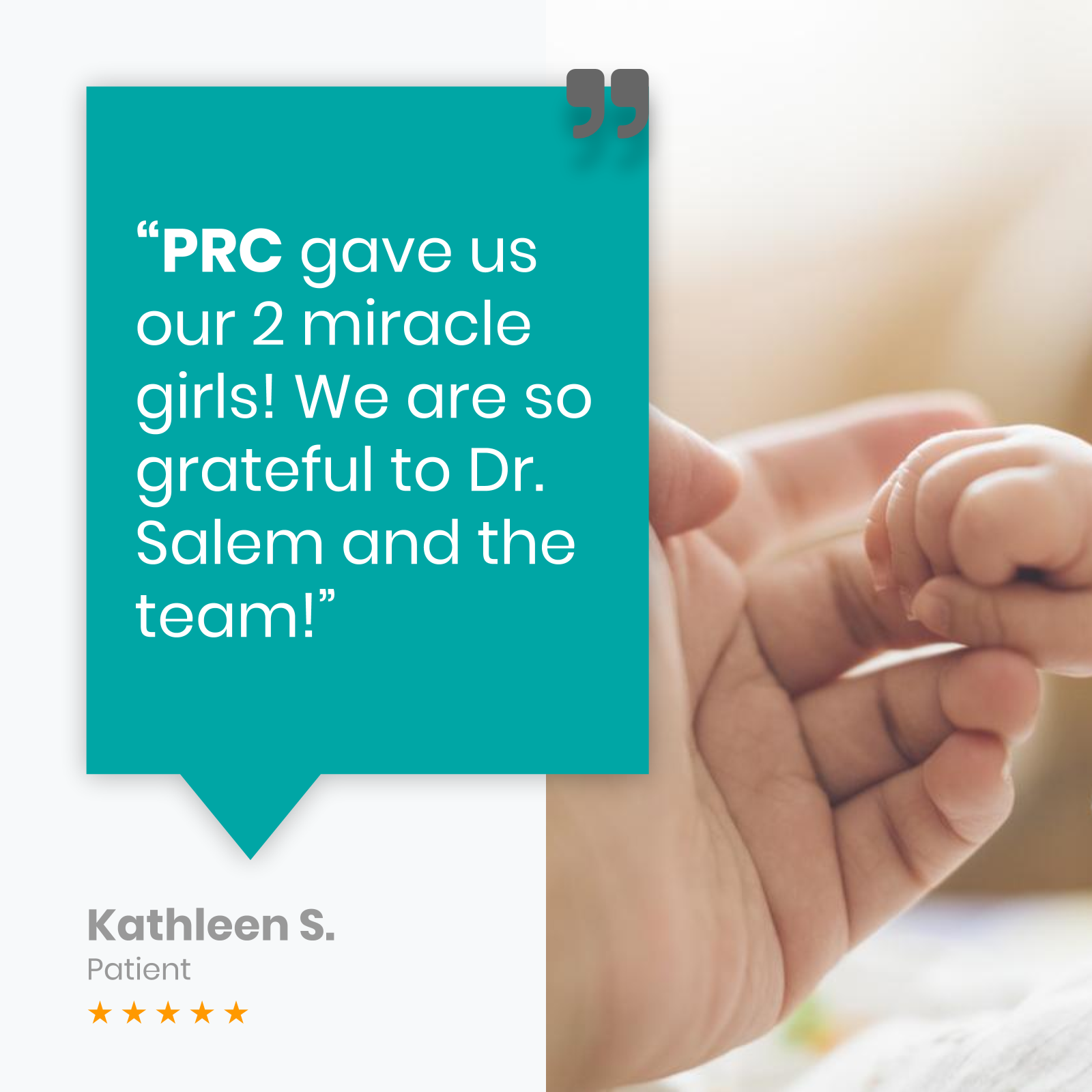Hysteroscopy
Hysteroscopy in Southern California
Hysteroscopy for infertility is a minimally invasive approach that allows your physician to visualize possible reproductive anomalies. Here’s what you need to know about hysteroscopy surgery.
The prospect of undergoing reproductive surgery can be frightening for many patients. Fortunately, innovations in surgical instruments and techniques have made most surgical procedures minimally invasive and much more comfortable. Additionally, newer procedures are significantly less likely to lead to complications than their earlier operating room counterparts. They also require less downtime and are considerably shorter. Interventions like hysteroscopy can be performed in as little as five minutes.
The PRC team uses the latest reproductive interventions, like hysteroscopy for infertility, to optimize reproductive potential. This minimally invasive procedure allows patients to address possible fertility complications in a comfortable, outpatient setting.
Hysteroscopy for Infertility
Numerous fertility challenges in women can be effectively diagnosed and treated using hysteroscopy. This procedure uses a long, thin, hollow device called a hysteroscope to inspect the uterine opening (cervix), the interior of the uterus, and the opening of the fallopian tubes. The hysteroscope is inserted using a transcervical approach through the vaginal canal. The tool has a light and camera at the tip, allowing the doctor to view the uterus on a monitor.
Laparoscopy also uses a minimally invasive technique for viewing the reproductive apparatus. However, a laparoscopic approach is used to survey the exterior of the uterus. Moreover, laparoscopic tools are inserted through a keyhole incision in the abdomen, not the vaginal opening. It’s very common for a fertility clinic in California to use laparoscopy and hysteroscopy together to achieve a comprehensive assessment of reproductive health.
Is Hysteroscopy Surgery?
When hysteroscopy is used as a diagnostic approach, incisions aren’t involved. However, local anesthesia is typically administered to make the procedure as comfortable as possible.
Hysteroscopy surgery can be a corrective tool used to remove abnormalities when surgical implements are inserted through a channel in the hysteroscope.
There are several types of hysteroscopy procedures used to address uterine complications. However, there are two main types of hysteroscopies: diagnostic hysteroscopy and operative hysteroscopy surgery.
When Is Hysteroscopy Used?
When used to identify the causes of infertility or multiple miscarriages, a hysteroscopy procedure is considered diagnostic. Diagnostic hysteroscopy is recommended when the patient experiences Pap test anomalies, bleeding post-menopause, or other symptoms of reproductive irregularities.
If correctable anomalies are detected, the physician may elect to perform operative hysteroscopy. The hysteroscope tool can be used to correct some uterine abnormalities during the original diagnostic procedure. Correction is achieved by inserting surgical instruments through the scope channels. Medical issues commonly addressed during hysteroscopy include:
- Fibroids
- Polyps
- Adhesions
Hysteroscopy is also used to remove intrauterine devices (IUDs) when they migrate or if other complications arise.
Diagnostic hysteroscopy typically only requires the administration of local anesthesia. Operative hysteroscopy, when performed in an operating room, may require general anesthesia.
There are two types of hysteroscopes: flexible and rigid. A flexible hysteroscope is typically used during in-office procedures. The tool’s flexibility allows the physician to navigate irregularities effectively to achieve a full view. Flexible hysteroscopes are often used when an irregular uterine shape is suspected or if there are indications of intrauterine lesions.
Rigid hysteroscopes are most often used in operating room settings. Their rigidity allows for better accommodation of a wide range of larger surgical tools.
What Are the Benefits of Hysteroscopy?
There are numerous benefits of hysteroscopy for infertility and overall reproductive health.
As a minimally invasive procedure, hysteroscopy benefits patients by requiring either very short hospital stays, or no hospital stays at all. The recovery time post-procedure is also shorter than it is for more invasive surgical interventions. Most patients report minimal discomfort post-operation, reducing or eliminating the need for prescription pain medications.
After Hysteroscopy: What to Expect
Hysteroscopy recovery varies from patient to patient, largely due to the types of hysteroscopy surgery used and the extent of the medical correction performed.
A hysteroscopic polypectomy – fibroid or polyp removal – doesn’t require extensive monitoring or a hospital stay, but there might be light bleeding for a few days post-procedure. Although hysteroscopy surgery is generally minor, some patients who require general anesthesia will be monitored for a few hours.
Is Hysteroscopy Right for Me?
If you suspect a medical impediment to pregnancy, the team at PRC will conduct a thorough evaluation of your medical history, symptoms, and reproductive health. While hysteroscopy has allowed countless patients to achieve healthy pregnancies, your circumstances will dictate the most appropriate course of action.
At PRC, we help patients optimize their reproductive health through safe and highly effective procedures like polyp removal and fibroid surgery. Hysteroscopy in Los Angeles allows patients to address possible pregnancy hindrances without requiring open surgery and significant recovery time.
We are passionate about giving potential parents every opportunity to welcome a beautiful baby into their homes and families. Please contact the representatives at PRC to schedule an appointment today.
If you Have Concerns About Your Fertility, Call us Today.
Treatments
Pacific Reproductive Center has been successfully aiding conception for over two decades. We optimize the conditions of fertility treatment to give every potential parent the greatest chance of successful childbirth.
Resources
We ensure that every patient fully understands their medical condition and treatment options available to them. We understand each patient is unique so we help guide you through the best option to support your own fertility journey.
Looking for the Best Fertility Clinic in Southern California?
Pacific Reproductive Center has four convenient locations throughout Southern California, making it easy for patients to receive quality care close to home. Each IVF fertility center has an on-site lab, next-generation services, and state-of-the-art equipment.
Whether in Glendale, Torrance, Irvine, or Corona, our world-class fertility doctors can help you build the family you’ve always wanted.
3720 Lomita Blvd, Suite 200 Torrance, CA 90505
116 E. Broadway, Suite 300 Glendale, CA 91205
10 Post Irvine, CA 92618
381 Corporate Terrace Corona, CA 92879




